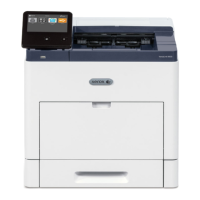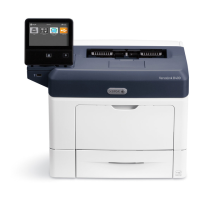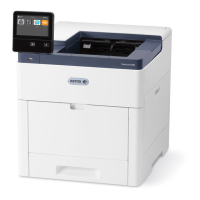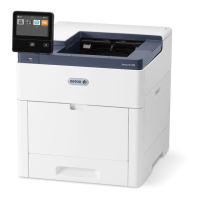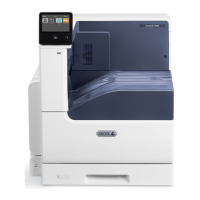8. If needed, for Default Trap Community Name, type an SNMP trap name.
9. In the System Administrator Login ID area, type the login ID for the administrator.
10. You can set Trap Destinations for LAN1 and Wi-Fi. For Trap Destination:
• Click an available field.
• Select the address type. Options include IPv4, IPv6, or Host Name.
• For IP Address/Host Name and Port, type the IP address or the network host name for the Trap
Destination, then type the port number.
• For Trap Community Name, type a name.
• For Traps to Be Received, select the traps that the SNMP manager receives. For each item,
enable the toggle button.
• Click OK.
11. Click OK.
CCoonnffiigguurriinngg SSNNMMPPvv33
SNMPv3 is the current standard version of SNMP defined by the Internet Engineering Task Force
(IETF). SNMPv3 provides three important security features:
• Message integrity to ensure that tampering with a packet does not occur during transit
• Authentication to verify that the message is from a valid source
• Encryption of packets to prevent unauthorized access
Note:
• Ensure that HTTPS SSL communication is enabled. For details, refer to Configuring HTTP
Settings in the Embedded Web Server.
• To use SNMPv3 in FIPS Mode, enable FIPS 140-2. For details, refer to FIPS 140-2.
EEddiittiinngg SSNNMMPPvv33 PPrrooppeerrttiieess
Note:
• To change the settings for SNMPv3, first enable HTTPS (SSL) communication. For details,
refer to Enabling HTTPS at the Control Panel.
• To use SNMPv3 in FIPS mode, first enable FIPS 140-2. For details, refer to FIPS 140-2.
1. In the Embedded Web Server, log in as administrator, then click Connectivity.
2. In the Protocols area, click SNMP.
3. For Port, select the toggle button.
4. Click SNMPv3.
5. For Enable (Read), select the toggle button.
6. To enable write access, for Write, select the toggle button.
62
Xerox
®
VersaLink
®
Series Multifunction and Single Function Printers
System Administrator Guide
Network Connectivity
